Cruel lesson. Russian and Swedish armies in the battle of Narva
The first battle of the Northern War for Russia was the battle of Narva. The military clash between Peter the Great and the modern European army immediately revealed the weakness of the Russian army and the need for deep transformations and reforms in military affairs.
Centuries-old struggle for access to the Baltic Sea
The eastern coast of the Baltic Sea came under Swedish rule during the Livonian War, under King Johan III (1568-1592). In the fall of 1581, the Swedes managed to capture the territory of modern Estonia, Ivangorod and Narva. At the same time, in Narva, “according to custom” (as the Swedish commander in chief Pontus Delagardi put it with charming spontaneity), about seven thousand local residents were killed.
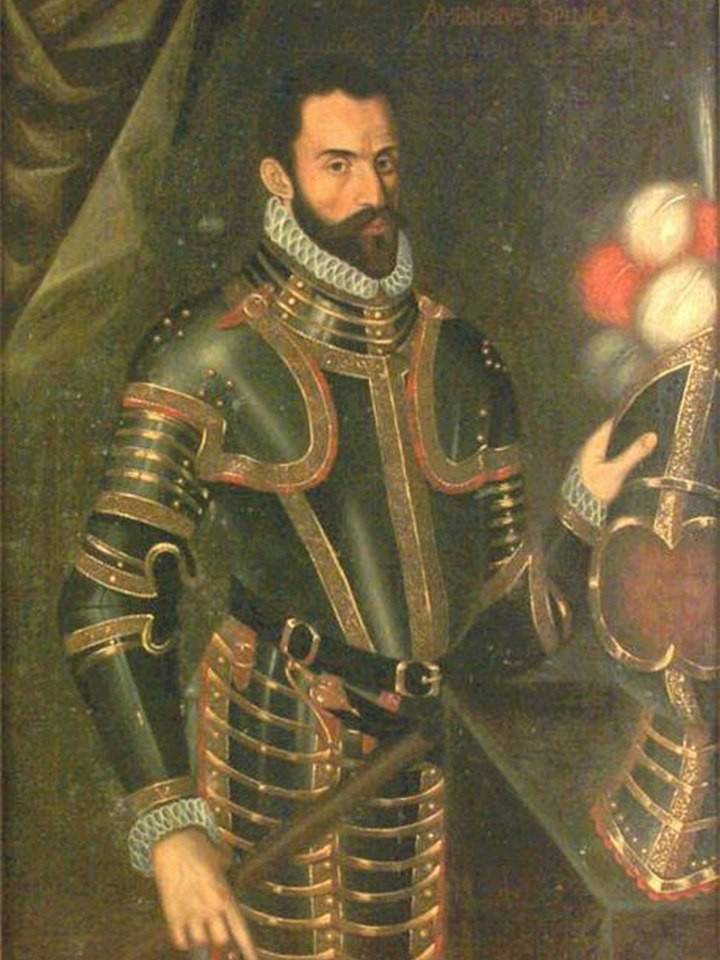
In 1583, Russia was forced to conclude the Plyus ceasefire, along which, in addition to Narva, it lost three border fortresses (Ivangorod, Koporye, Yam), preserving only Oreshek and a narrow “corridor” along the Neva to its mouth, a little over 30 km long.
In 1590, the government of Boris Godunov (the nominal king at that time was the moron Fyodor Ivanovich) made an attempt to recover the lost territories. On January 27, the Yam fortress was taken, then the Swedes were forced to yield to Ivangorod, the siege of Narva was unsuccessful. This war continued intermittently until 1595 and ended with the signing of the Tyavzinsky Peace, according to which Russia returned to itself Yam, Ivangorod and Koporye.
Everything changed during the Time of Troubles. Russian-Swedish war of 1610-1617 culminated in the signing of the Stolbov’s peace unfavorable for Russia, according to which in exchange for the return of Novgorod, Porkhov, Staraya Russa, Ladoga, Gdov and Sumerian volost, the new tsar Mikhail Romanov lost to Ivangorod, Yam, Koporye, Oreshek and Korelu, and also pledged to pay an indemnity of 20 thousand rubles.
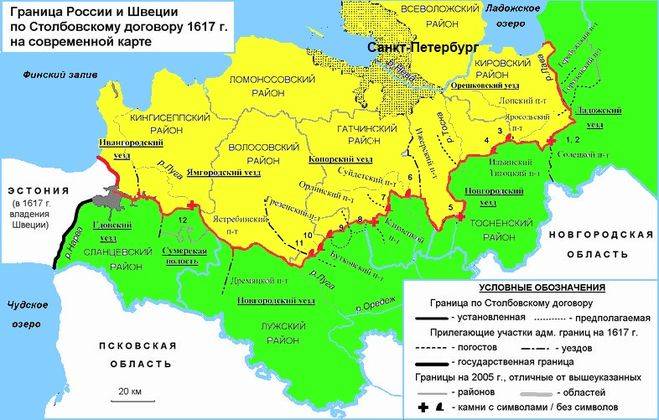
In Sweden at that time, King Gustav II Adolf ruled, who reformed the army, the first in the world to realize the idea of recruitment. With him, men from 15 to 44 years were taken into recruits. Each soldier and officer received from the state a plot of land that his family members could cultivate, but often he leased it. The government provided its soldiers with a uniform and weapons, and during the war also paid a salary. This initiative was very successful: already in the early 20s of the XNUMXth century, the Danish ambassador informed from Stockholm that the infantry in Sweden was “skillfully trained and well armed”.
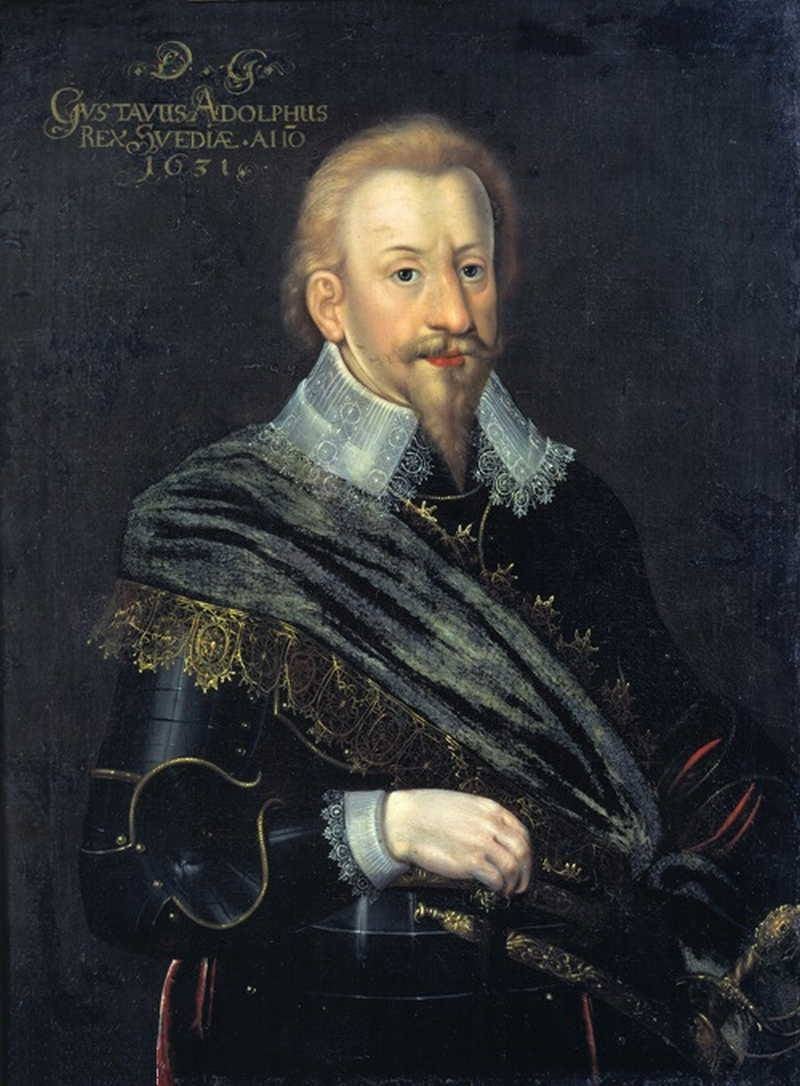
Distinctive features of the Swedish army were its discipline and high morale. Protestant priests carried out a very effective ideological treatment of soldiers in the spirit of the doctrine of Divine Predestination, according to which a person’s life is in the hands of God, and no one will die before his deadline, but no one will survive it.
It's funny that with the beginning of the Northern War, some priests also began to assure the soldiers that Sweden was the God-chosen country - New Israel, and Russia - personifies Assyria: if you read its ancient name "Assur" on the contrary, you get "Russa" (!).
In the Thirty Years War, Sweden lost the “Snow King” Gustav II Adolf, but received Pomerania, part of Brandenburg, as well as Wismar, Bremen, Verdun and became a member of the Holy Roman Empire.
Under the “silent king” Karl X, Sweden again fought with Russia, the army of Alexei Mikhailovich unsuccessfully besieged Riga, as a result, Moscow had to recognize all the conquests of Sweden in the Baltic states.
The new king, Charles XI, in 1686 subjugated the Swedish church to the crown, seized many plots of land from aristocrats and put public finances in order.
In 1693, the Riksdag officially called Charles XI "autocratic, ordering everything and disposing of the king, not responsible to anyone on earth for his actions." All this allowed his son to wage war for a long time, "eating up" the accumulated reserves and ruining the prosperous state left to him. There was no legal way to stop this crazy country leading to disaster, so when Charles XII died during the siege of the Fredriksten fortress, versions immediately appeared that he was shot dead by his subordinates.
This king, who ascended the throne on April 14, 1697 at the age of 14 10 months, besides Sweden, owned Finland, Livonia, Karelia, Ingria, the cities of Wismar, Vyborg, the islands of Rügen and Ezel, part of Pomerania, the Duchy of Bremen and Verdun . Sweden lost most of this inheritance through the fault of the Northern War.
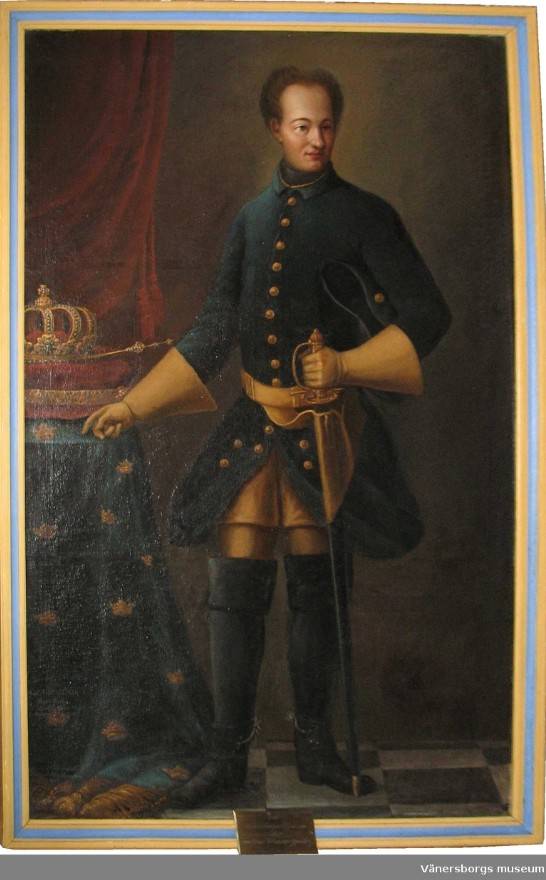
The Scottish historian Anthony F. Upton believed that “in the person of Charles XII Sweden received a charismatic psychopath,” who, if he continued his rule, would have led Sweden to a complete defeat, similar to what Germany experienced under Hitler.
Now let's talk about the beginning of the Northern War, the state of the Russian army and the first big battle of the Russian and Swedish troops - the famous battle of Narva.
Reasons for the Northern War
To a certain extent, Charles XII then had to reap the fruits of the aggressive policy of his predecessors, who sought to turn the Baltic Sea into a “Swedish lake”. In the Northern War, Denmark claimed Schleswig and Holstein-Gottorp, Poland, whose king was the Saxon Elector Augustus Strong - to Livonia (Swedish Livonia) and Riga, Russia - to the Ingermanland and Karelian coast of the Baltic Sea occupied by Sweden.
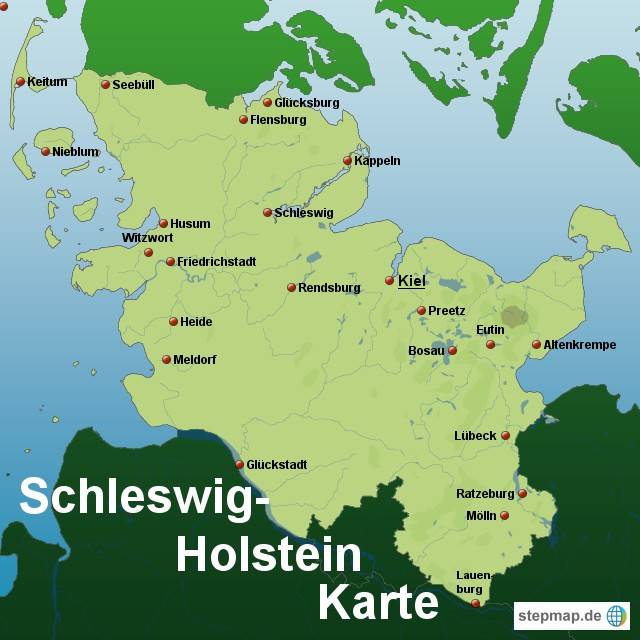
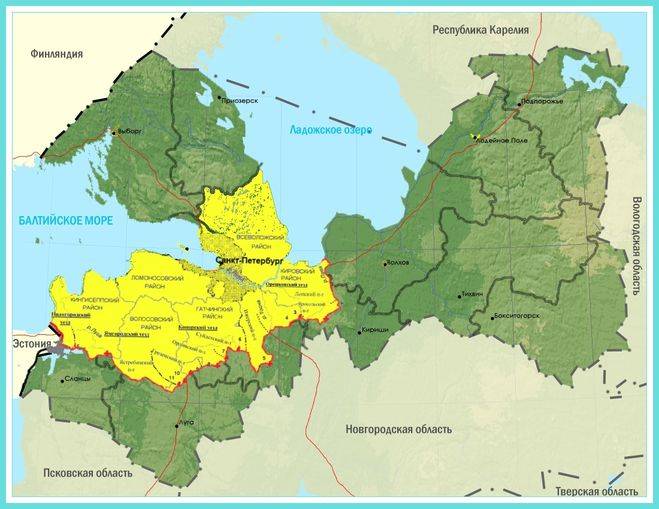
In Europe, the new Swedish king had a reputation as a windy gallop (well-deserved), so no one expected great feats from him.
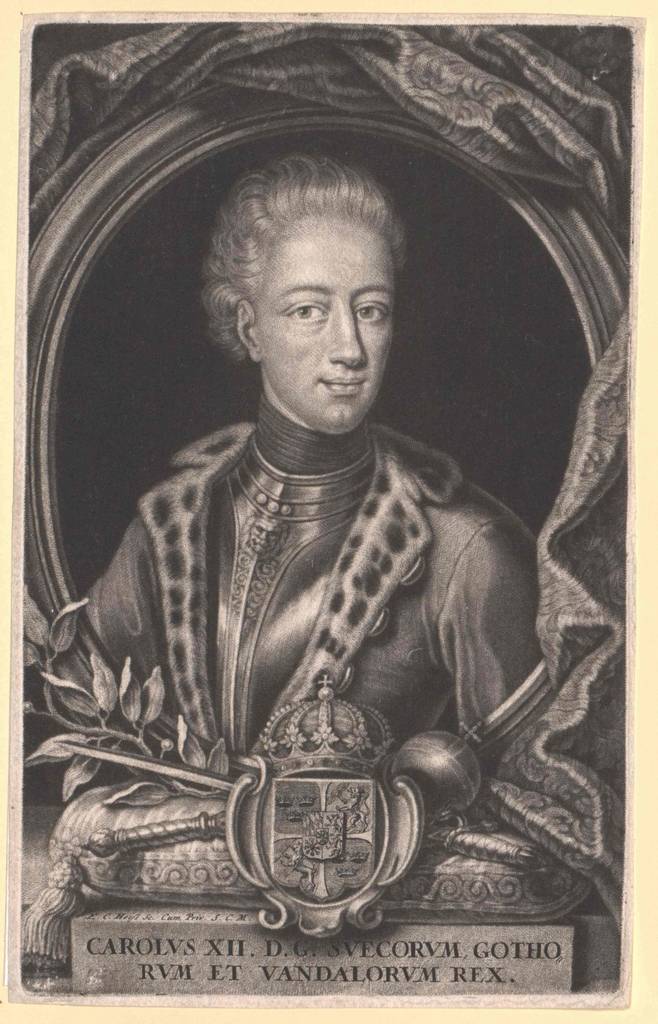
Tradition claims that Charles XII heard the first musket shots only at the beginning of the war: during a landing at Copenhagen, he asked Quartermaster General Stuart about an incomprehensible whistle (which was fired by flying bullets).
At the same time, it is known that the prince shot the first fox at the age of 7 years, the first bear - at 11.
But, perhaps, the sounds of gunshots of a combat musket and a hunting rifle varied significantly and were not similar? In general, imitating the heroes of the sagas, Karl practiced mainly with knives. He later went to the bear with a spear, then - with a club and a pitchfork. And once, Karl and the Duke of Holstein-Gottorp Friedrich (grandfather of the Russian Emperor Peter III) for several days directly in the palace chopped the heads of calves and sheep, trying to do it with one blow.
The beginning of the Northern War
The Northern War began in February 1700 with the siege of Riga by the Saxon army of Augustus the Strong.
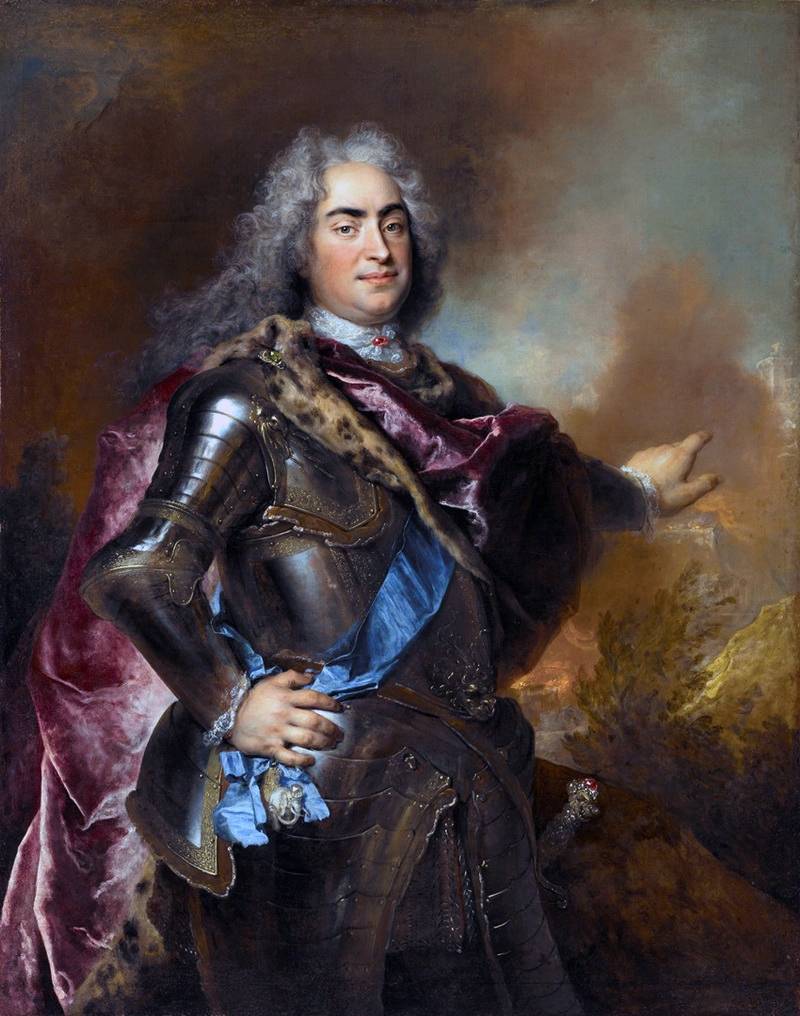
In March of that year, the Danish troops of King Frederick IV invaded Gottorp-Holstein.
The Swedish king came to the aid of Duke Frederick, who was his friend, cousin and son-in-law (married to the sister of the Swedish king).
At the head of 15 thousand soldiers, Charles XII landed at Copenhagen, and the Danes, who were afraid of losing their capital, signed a peace treaty and left the coalition (August 18, 1700).
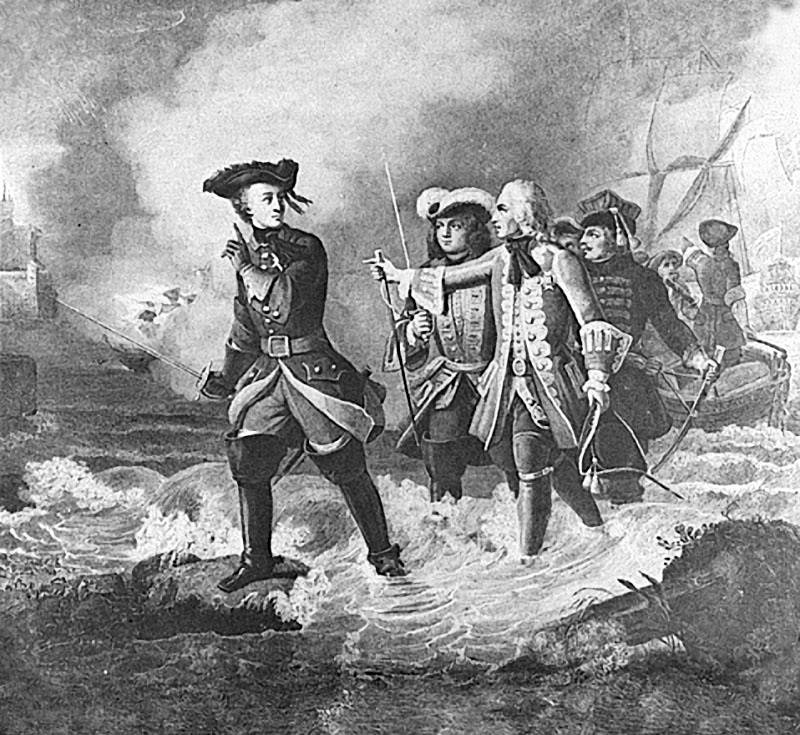
In Russia, on August 30, 1700 (according to the Gregorian calendar), Peter I staged a celebration in Moscow on the occasion of the conclusion of peace with Turkey and the acquisition of Azov, at which they burned a "great fireworks." And the very next day the war of Sweden was declared. On September 3, Russian troops advanced towards Narva. And on September 19, Augustus the Strong diverted his troops from Riga. Thus, all plans for the joint conduct of hostilities were violated.
Russian army at the beginning of the Northern War
What army did Peter I bring to Narva?
Traditionally, the Russian army consisted of the militia of the so-called “service people” - for the land allotted to them they had to appear on military service on horseback and with weapons, they were not paid for maintenance during the campaign. The sons of the service people inherited both land and duties. No "military training" was held for them, and therefore the level of combat training of these fighters could only be guessed at. The commanders of this army were appointed not according to their deserts, but according to the nobility of the clan.
The Streltsy regiments, which appeared in 1550, were an attempt to organize the first regular army in Russia. Special taxes were collected for its maintenance - "food money" and "streletsky bread" (later - "streletsky money"). Sagittarius was divided into equestrian (stirrup) and infantry, as well as at the place of stay: Moscow and city (Ukrainian).
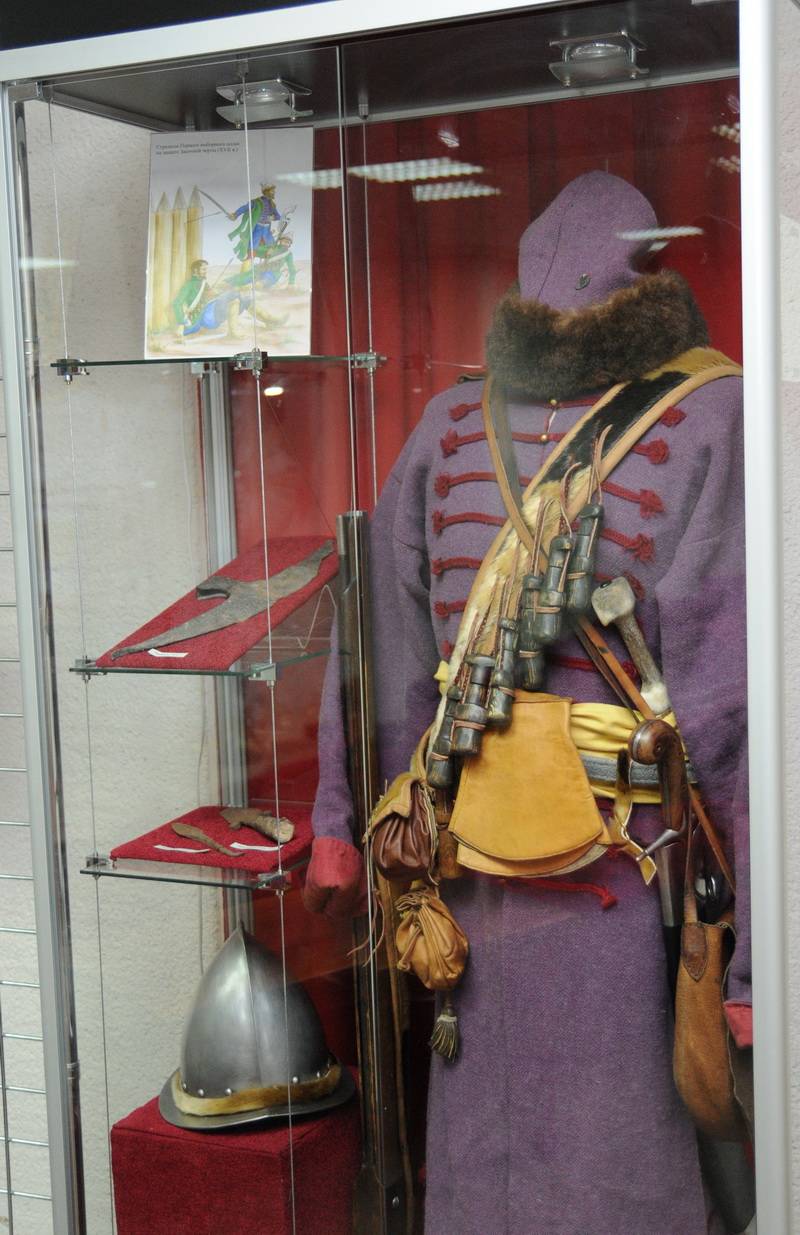
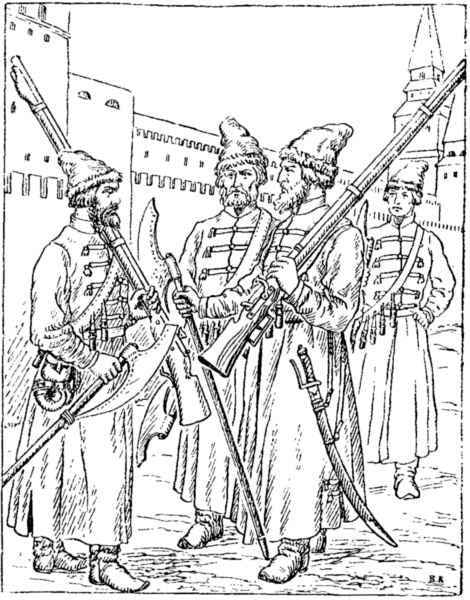
In peacetime, streltsy performed police functions, and also had to extinguish fires. Soon, the streltsy service became hereditary, which could not be abandoned, but could be transferred to someone from relatives. Sagittarius kept their personal households, engaged in crafts and gardening, and often they did not have time for combat training, and there was no special desire to practice the drill either.
The combat readiness and troops of the service people and the Streltsy regiments already in the late 2500th century caused serious doubts, and therefore, under Boris Godunov, the first regiment was formed, consisting entirely of foreigners. It is believed that its number could reach XNUMX people.
In 1631, the government of Mikhail Romanov decided to hire 5000 foreign soldiers from Protestant countries (Denmark, Sweden, Holland, England).
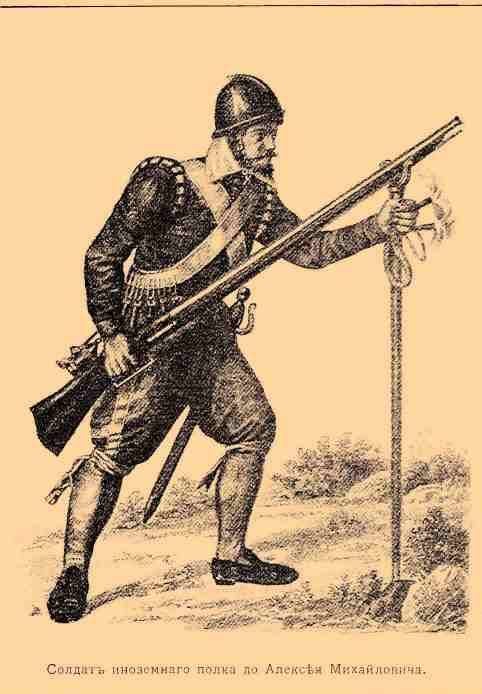
However, these mercenaries were very expensive, and therefore it was decided to organize regiments of the "foreign system" of small-local noblemen and the same service people, instructors and commanders in whom foreign officers were to become.
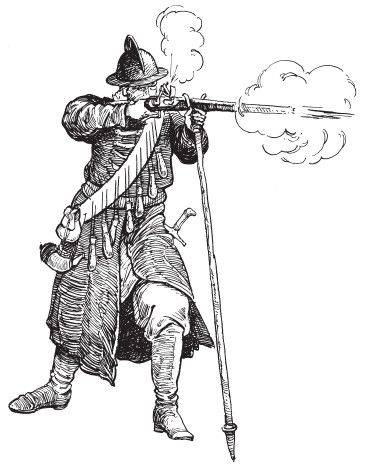
By the end of the reign of Fedor Alekseevich, there were already 63 regiments of such an army.
In 1681, a “commission” under the chairmanship of Prince V.V. Golitsyn proposed appointing officers “without seats and without selection” and on January 12, 1682, the Duma decided to prohibit “counting in places” in the service. In the Kremlin, “Bit books” were solemnly burned, which contained data on a local account, and on which everything was previously determined — from the place at the royal table to the post in the army. So the archaic and very detrimental local system was eliminated.
In 1689, when the Russian army under the command of Golitsyn for the second time went to the Crimea, the number of soldiers of the regiments of the foreign system reached 80 thousand people (with a total army of 112 thousand).
But in the army of Peter I in 1695 there were 120 thousand soldiers, and only 14 thousand of them turned out to be soldiers of regiments of the foreign system (they became part of the 30-thousandth corps, which Peter himself led to Azov). And in 1700, at the time of the outbreak of the Northern War, in the Russian army moving towards Narva, there were only four regiments trained and organized according to European standards: Semenovsky and Preobrazhensky Guards, Lefortovo and Butyrsky (total number of regiments - 33, as well as the service militia out of 12 thousand people and 10 thousand Cossacks).
The soldiers of the four above-mentioned regiments, according to the testimony of Saxon General Langen, were tall, as if in selection, well-armed and dressed in uniform, and trained "so well that they would not yield to the German regiments."
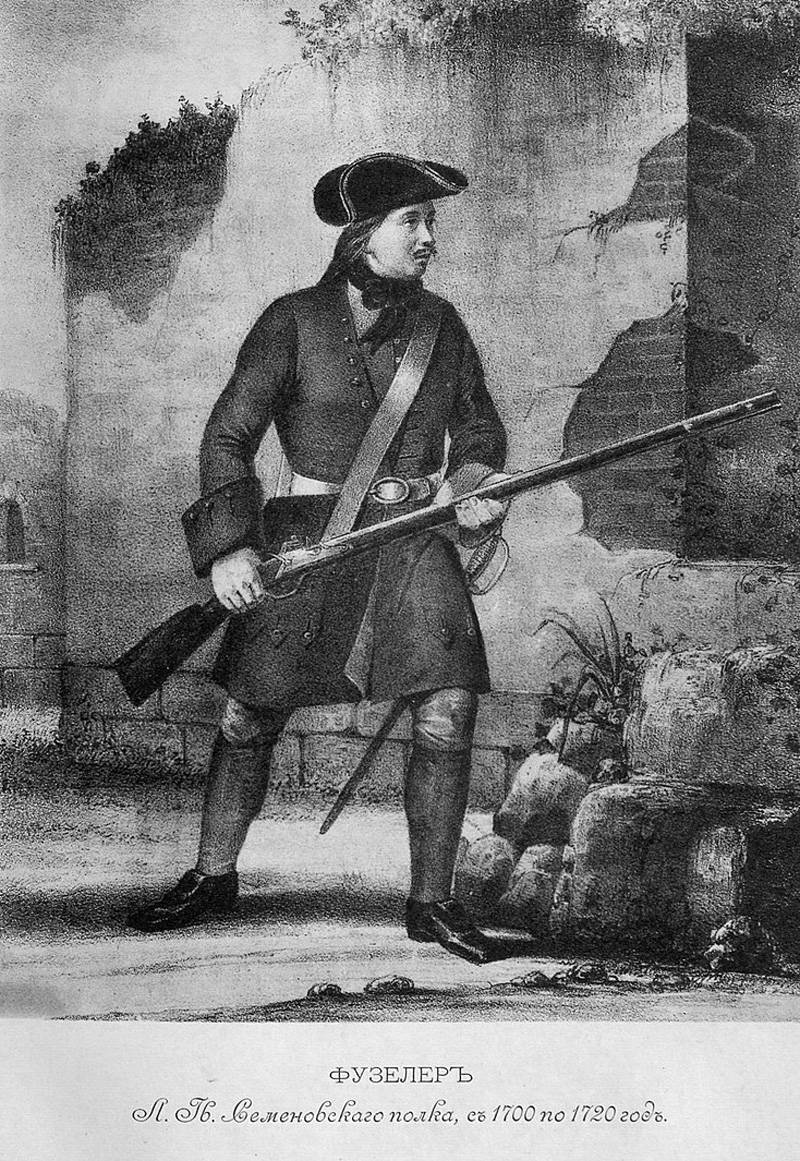
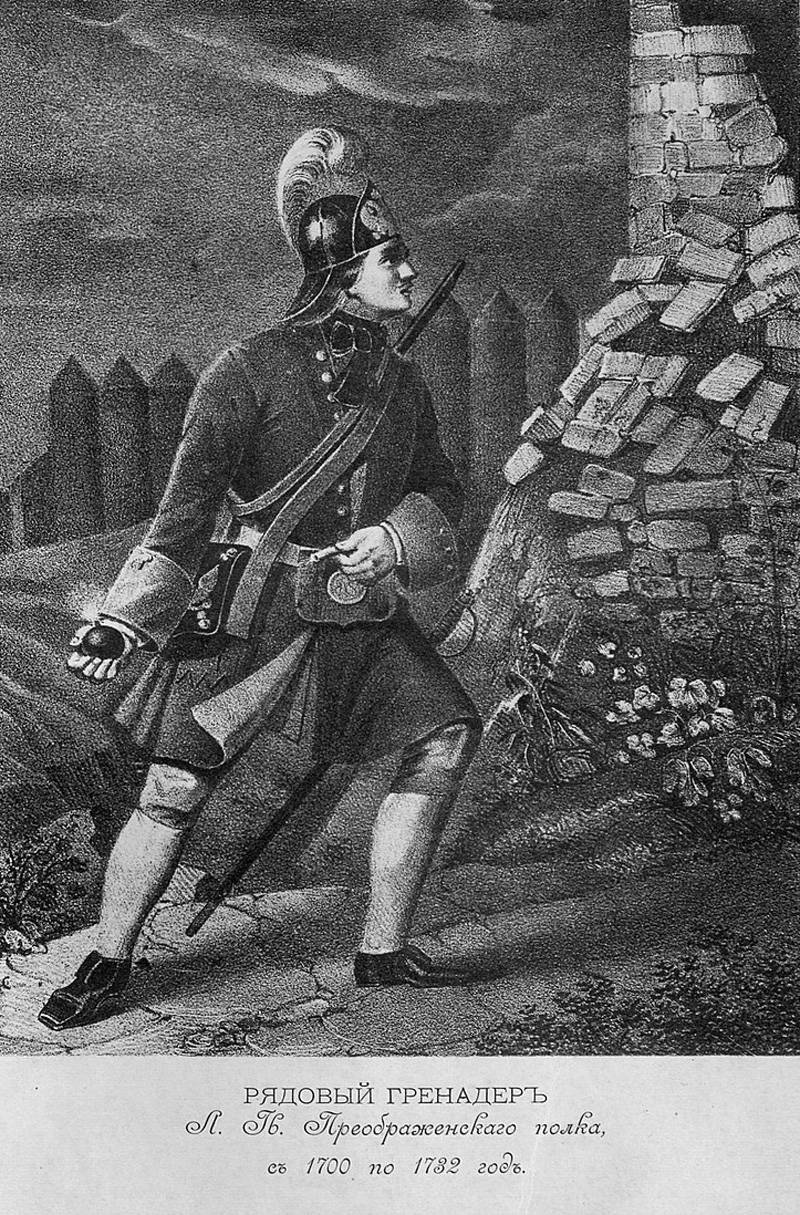
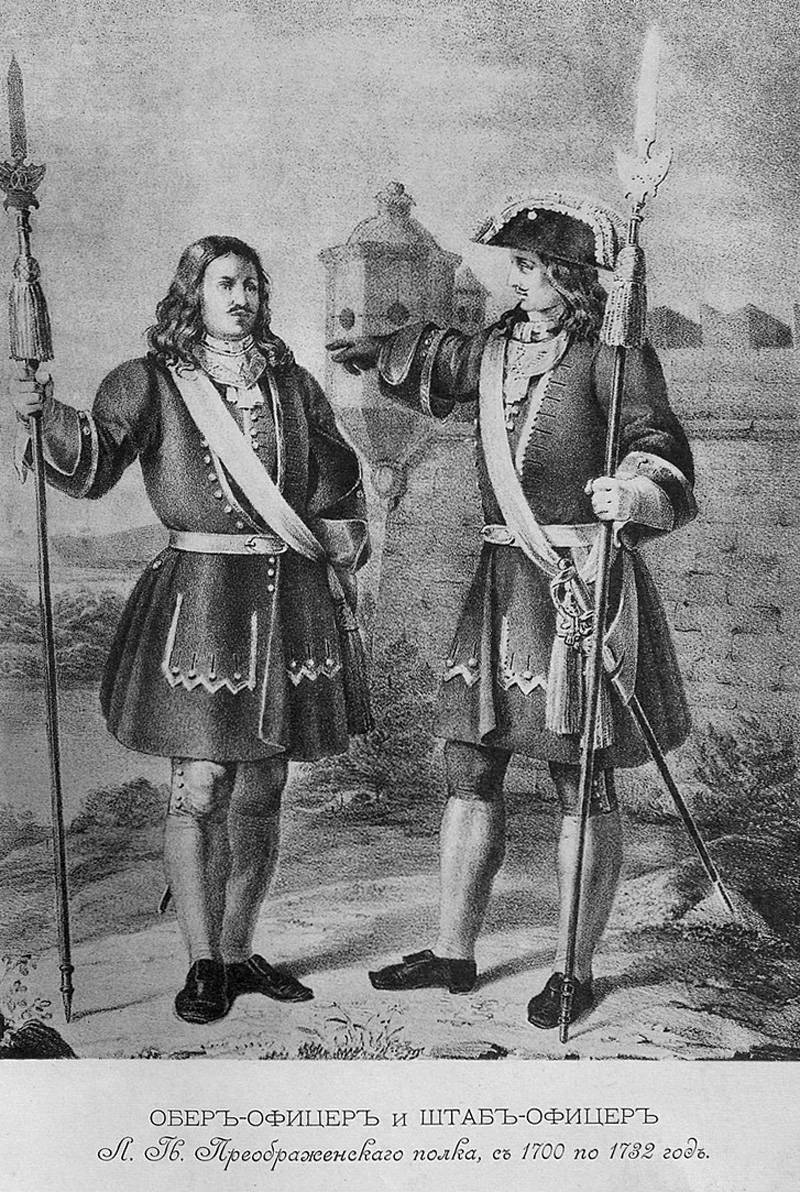
The secretary of the Austrian embassy, Korb, spoke of other parts as "a rabble of the most crappy soldiers recruited from the poorest mob." And F. A. Golovin (admiral since 1699, Field Marshal since 1700) claimed that they "couldn’t take up the musket."
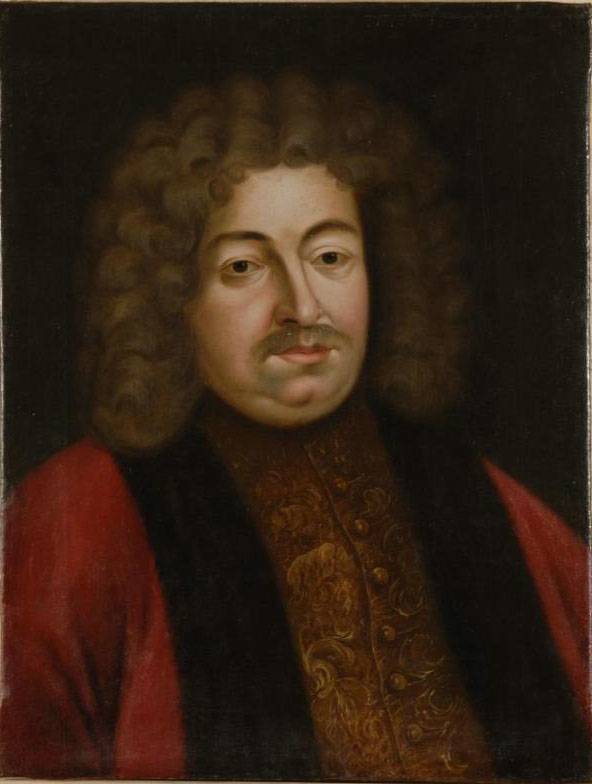
Thus, we can conclude that, contrary to popular belief, the Russian army in the early years of the reign of Peter I significantly weakened and degraded in comparison with the times of Alexei Mikhailovich, Fedor Alekseevich and Tsarevna Sophia. Prince Ya. F. Dolgoruky in 1717 dared to tell the tsar the truth during a feast: Alexei Mikhailovich "showed the way", but "all his institutions were meaningless ruined." The “closest relatives” of the tsar were probably the Naryshkins, Streshnevs, Lopukhins.
In general, it is difficult to understand what Peter was counting on, directing such an army against the strongest army in Europe, but on August 22, 1700 he nevertheless moved him to Narva.
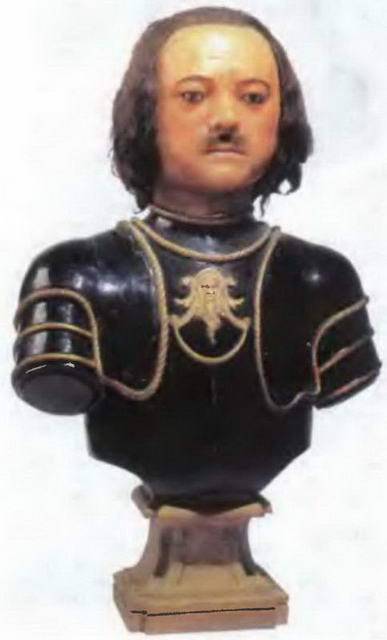
The movement of enemy forces towards Narva
The campaign of the Russian army to Narva was poorly organized, the army was starving and literally bogged down in the mud, there were no horses or carts, carts with food and ammunition were lagging behind. As a result, Russian troops approached Narva only on October 1, 1700. And on the same day, the ships of Charles XII went to Livonia. On them were 16000 foot soldiers and 4000 cavalry.
Peter ordered the command of his troops to the Duke of Croa de Croix, who had previously fought against Turkey in the Austrian army, did not gain the commander’s laurels, and, as unnecessary, was recommended to the Russian allies.
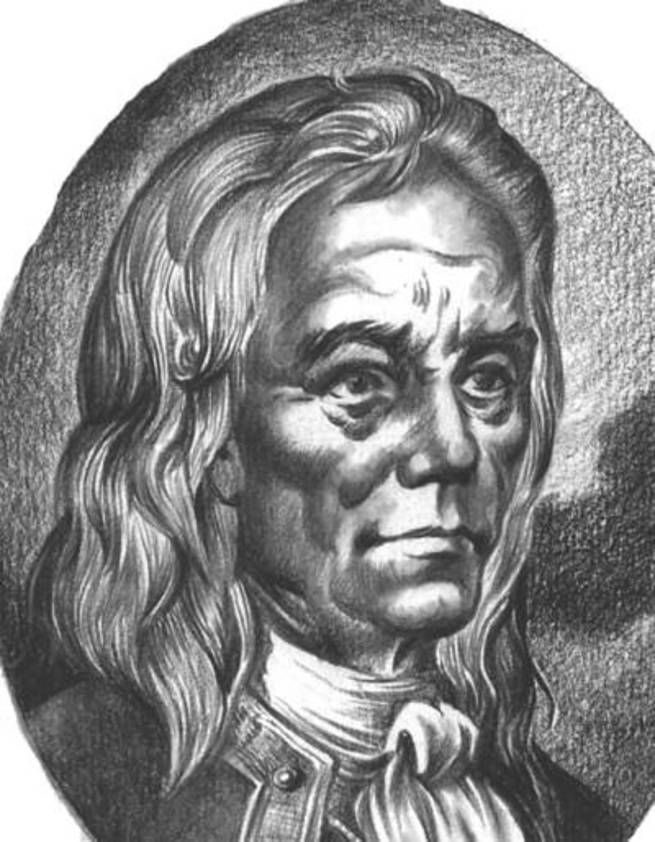
But Peter trusted the duke, and in order not to impede his actions, personally marking out the fortifications of the Russian camp, he left for Novgorod.
Narva was defended by the detachment of General Horn, numbering about 1000 people. This city could not be called a strong fortress, but Russian artillery, which began shelling its walls, quickly consumed the entire supply of shells.
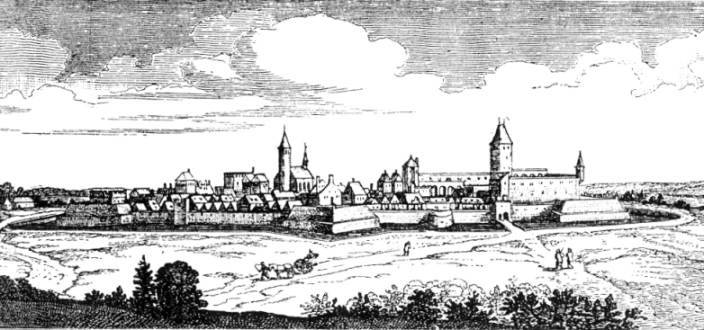
He did not dare to storm the city, and therefore he surrounded the city with a line of trenches, which had the appearance of an arc resting on its ends against the river bank. The siege of Narva lasted 6 weeks, but the city was never taken until the Swedish army approached.
Meanwhile, B.P. Sheremetev, at the head of the five-thousandth detachment of the noble cavalry, was sent to Revel and Pernov (Pärnu).
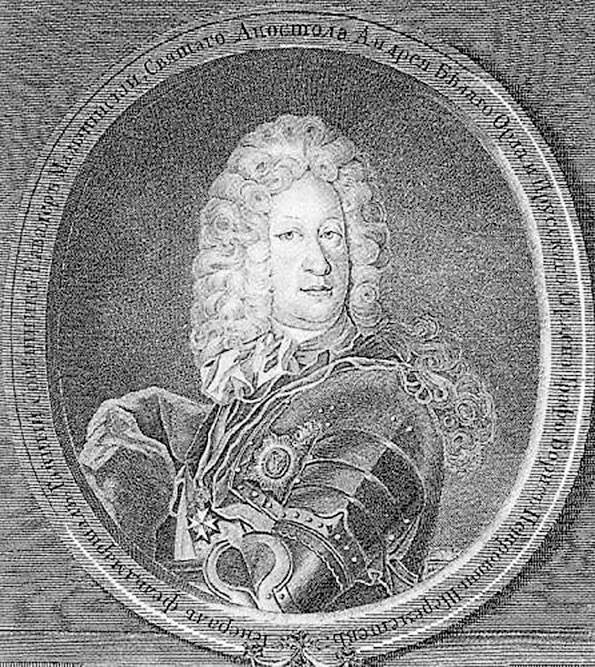
Here he encountered the Swedish troops sent by Charles XII for reconnaissance and defeated them. Karl continued his movement, dividing his small army into three parts. The first corps covered the movement from the south (the king was afraid of the approach of the troops of Augustus the Strong), the second went to Pskov, the third - went around Sheremetev’s detachment, who, fearing the environment, led his cavalrymen towards Narva.
Sheremetev acted quite reasonably, but Peter intervened, who accused him of cowardice and ordered him to return. Here, too far advanced Russian cavalry fell Charles XII himself with the main part of his army (about 12 thousand people). With a small number of his soldiers, Sheremetev still managed to get out of the encirclement and on November 18 to come to Narva with news of the movement of the Swedes.
Battle of Narva
On November 19, Charles XII came to the Russian camp, who at that time had only 8500 soldiers.
"How? Do you doubt that with my eight thousand brave Swedes I will get the upper hand over eighty thousand Muscovites? ”The king said to his close associates. And, almost immediately threw his army into battle.
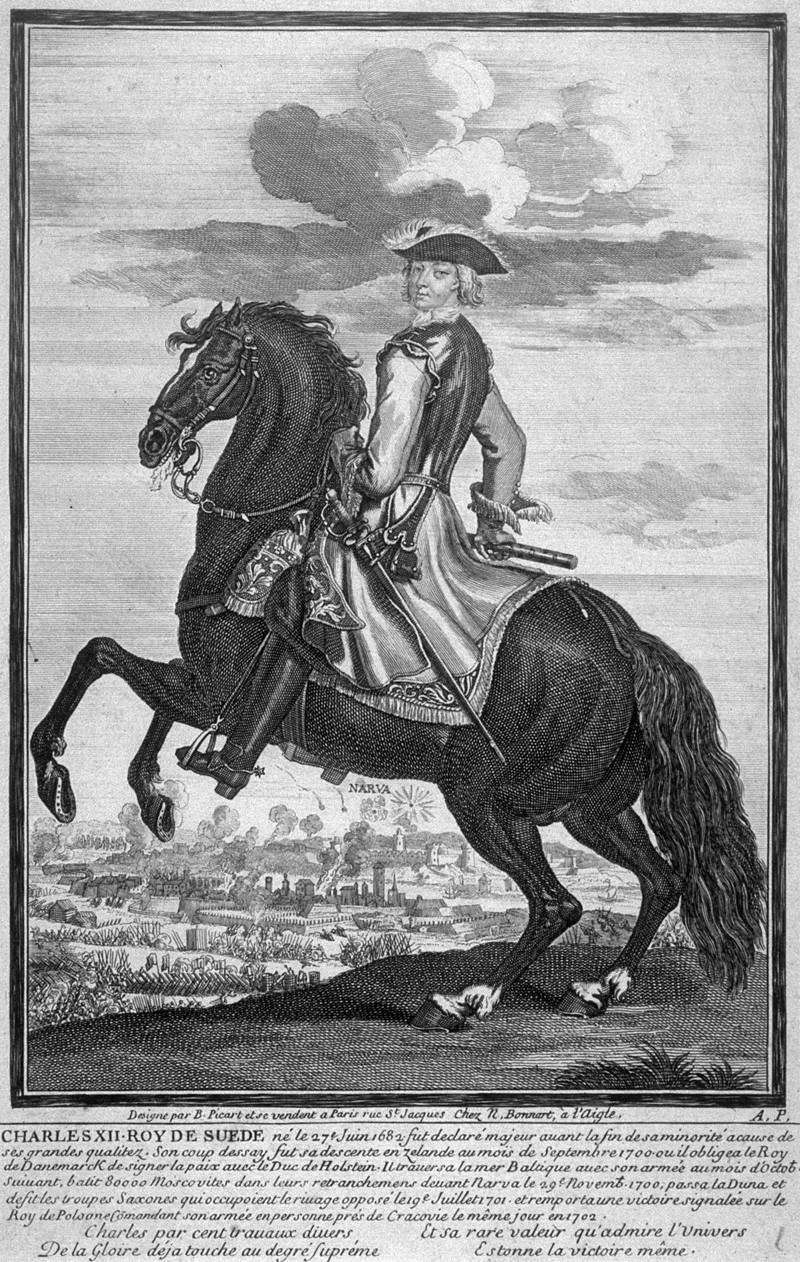
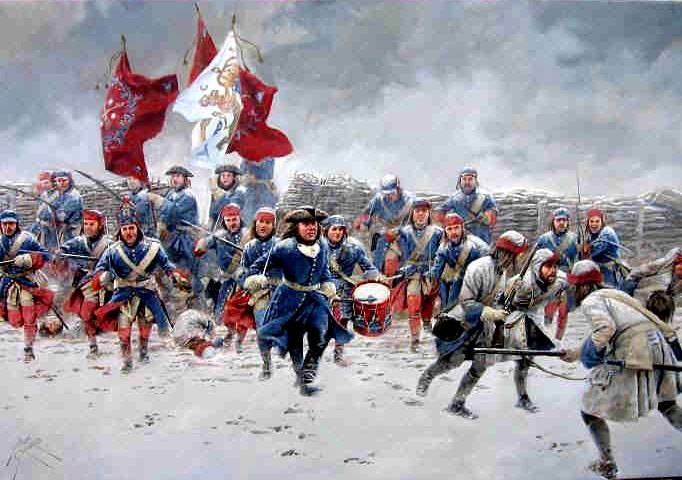
His artillery defeated the fortifications of the Russian camp, and the Swedes shouted, “God be with us!” Two columns advanced into the attack.
Recall that the Russian troops, significantly superior to the army of Charles XII, were stretched around Narva for seven miles, so that at all points they were weaker than the Swedes. Weather conditions favored the Caroliners: a strong wind pushed the Swedish soldiers into the back, their opponents were blinded by a blizzard.
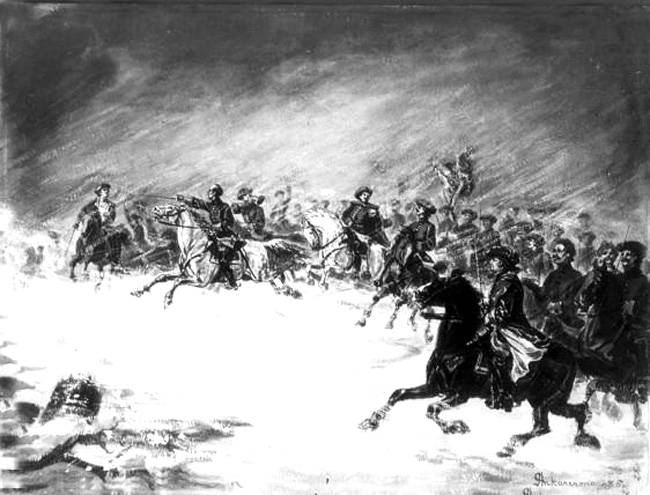
Within half an hour, the center of Russian positions was broken, and panic began. Someone shouted: “The Germans changed!”, And this was the last straw: the soldiers killed foreign officers and fled to the bridge, which collapsed under them - could not bear the weight of hundreds of fleeing people.
The Duke de Croix with the words: “Let the devil himself fight at the head of such soldiers!” Surrendered with his entire headquarters. Demoralized Russian officers and generals also surrendered. The Sheremetev cavalry, which could have bypassed the Swedes, also fled, while about a thousand people drowned in Narova.
But the battle did not end there. On the right flank, the regiments of the new system resisted - Preobrazhensky, Semenovsky and Lefortovsky, which were joined by soldiers of the Golovin division. Surrounding themselves with carts and slingshots, they repulsed the attacks of the Swedes. Adam Weide's division, which had risen in the square, continued to fight on the left flank.
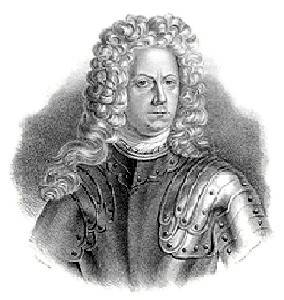
The battle in these areas was so fierce that a horse was killed under King Charles himself, Major General Johan Ribbing was killed, and generals K. G. Renschild and G. Yu. Maidel were wounded.
In the Swedish army that day, too, was far from all right. Two detachments of caroliners, not recognizing their blizzards, attacked each other and suffered losses. Other Swedish soldiers, breaking into the Russian camp, could not resist the temptation and began to rob him, leaving the battle.
Meanwhile, the forces of the Russian regiments that continued to fight were comparable with the size of the entire Swedish army at Narva, and if their commanders had enough endurance and composure, the outcome of the battle could be completely different. At the very least, the shame of surrender could well have been avoided. But the flanks of the Russian army acted in isolation, their generals did not know what was happening with their neighbors, had no information about the number of Swedes opposing them. Having survived the enemy’s blows, right-wing generals Y. Dolgorukov, I. Buturlin and A. Golovin entered into negotiations with Charles XII. For the right of unhindered departure, they handed over all artillery to the Swedes - a total of 184 guns were left.
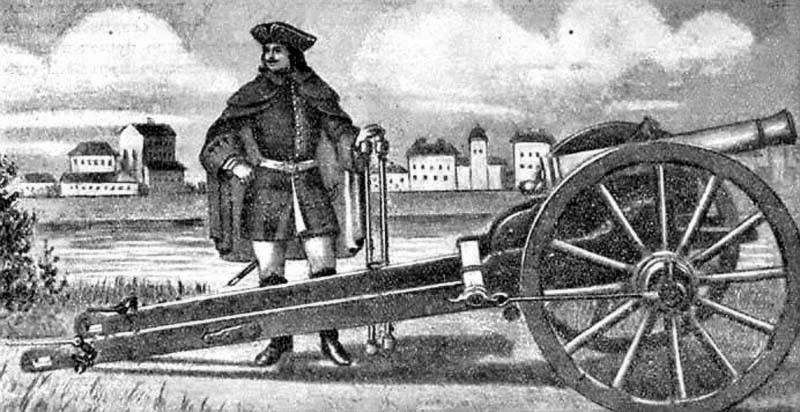
Only after learning about this, did Adam Weide stop the resistance.
The Swedes violated the contract, freely letting in only soldiers of the guard regiments. The rest were robbed "without a trace", having lost not only weapons, but also tents and "all belongings." Generals and officers of higher ranks, contrary to the agreement, were not released. In total, 10 generals and about 70 officers remained in captivity.
The Georgian prince Alexander was also captured. Learning about this, Carl said:
The king did not suspect that he would have to spend several years on the territory of the Ottoman Empire, surrounded by the Janissaries guarding him. (This episode of the biography of Charles XII was described in the article: Ryzhov V.A. "Vikings" against the Janissaries. The incredible adventures of Charles XII in the Ottoman Empire.)
The remnants of the army were saved by B. Sheremetev, who gathered on the other side of the demoralized soldiers and led their retreat to Novgorod. Here Peter I met them with the words:
The results and consequences of the Narva battle
The Russian army near Narva lost about 6 thousand soldiers, but, together with the sick and wounded, up to 12 thousand dropped out. The Swedes lost 3 thousand people.
The battle of Narva had a number of serious consequences. It was with her that the European glory of Charles XII began, as a great commander, the new Alexander of Macedon. In addition to human and material, Russia suffered significant reputation losses, its international authority was badly damaged.
But this battle strengthened the king in the opinion of the weaknesses of Russia and the Russian army, which later led to a terrible defeat at Poltava. Peter, having received time to replenish and rebuild the army, used this "lesson" in full.
The worst situation was with the replenishment of artillery: in Russia there simply was not the right amount of metal of suitable quality. I had to collect the bells of churches and monasteries. This story continued already in the time of Catherine II: a delegation of the clergy appeared to the Empress, who, referring to Peter's unfulfilled promise to compensate for the losses, asked "to return the favor." A well-known historical anecdote is narrated about the future - in the original meaning of the word (the Secret History by Procopius of Caesarea is considered the first collections of anecdotes, the opposite according to his own “History of War”). Catherine, allegedly, requested materials on this case, where she discovered an indecent resolution of Peter. And she answered the delegates that she, as a woman, could not even offer them the organ indicated by Peter.
Only 2 weeks after the seemingly catastrophic defeat at Narva, Sheremetev, who had fled from this fortress, attacked the Swedish detachment of General Schlippenbach at Marienburg, was forced to withdraw, but Schlippenbach was not successful when he tried to pursue him. A year later (December 29, 1701) at Erestfer, Sheremetev’s troops inflicted the first defeat on the Schlippenbach corps, for which the Russian commander received the rank of Field Marshal and the Order of St. Andrew the First-Called. Schlippenbach was then defeated twice in 1702.
Looking ahead, let's say that Volmar Schlippenbach was captured during the Battle of Poltava, in 1712 he entered the Russian service with the rank of major general, rose to the rank of lieutenant general and member of the military collegium.
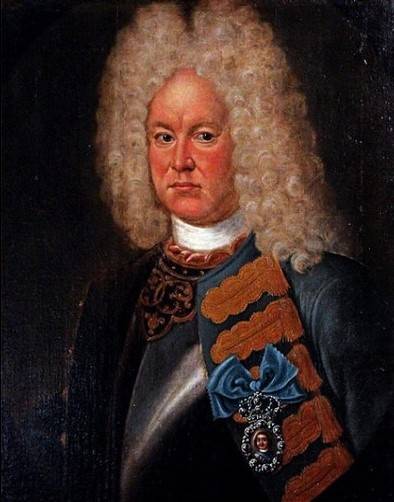
Ahead were the victories of the Russians at Good, Lesnaya, Poltava and Gangute, but the story of these battles is beyond the scope of this article.
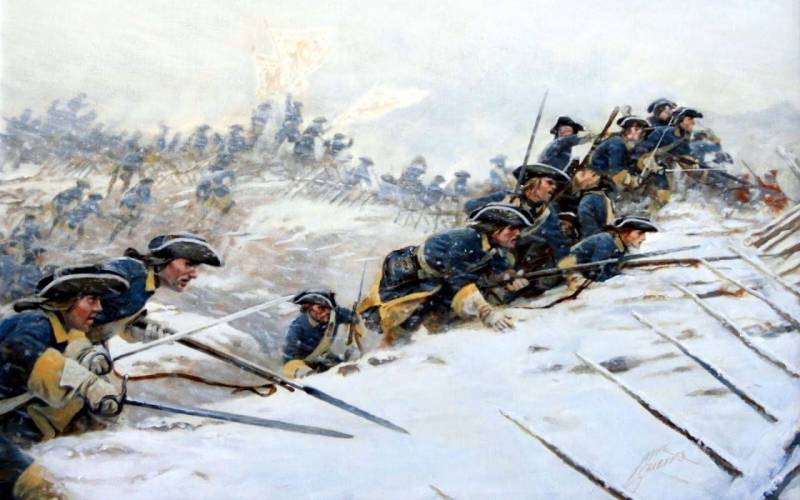

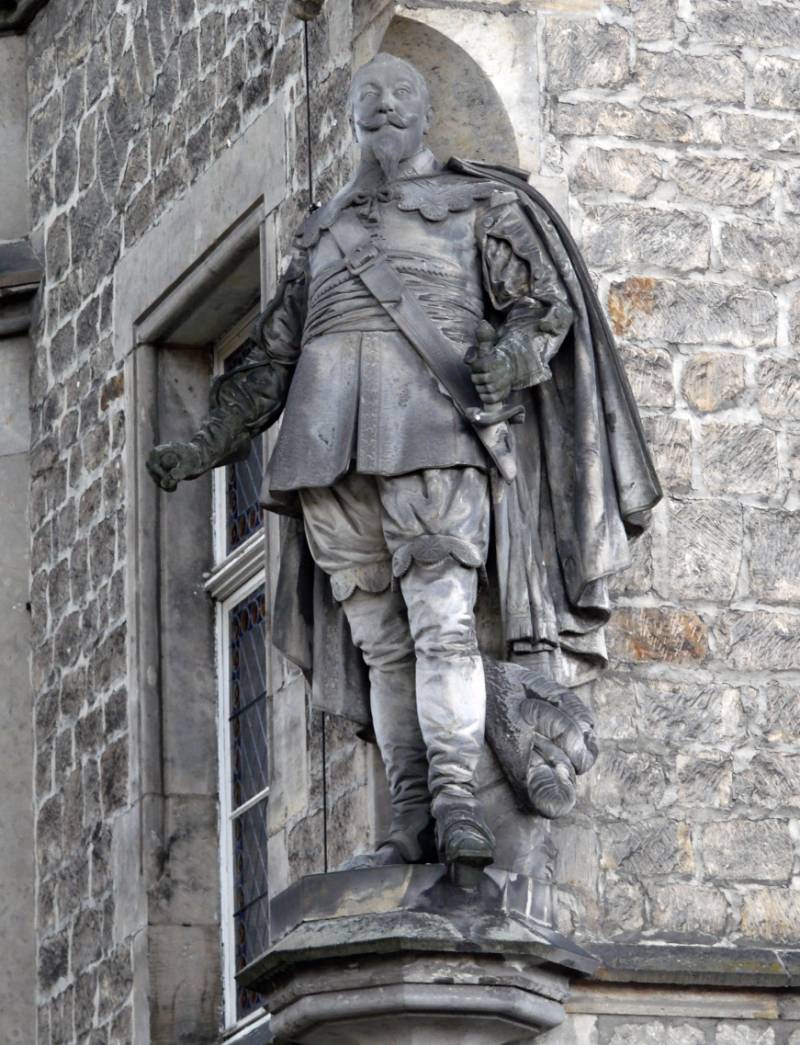
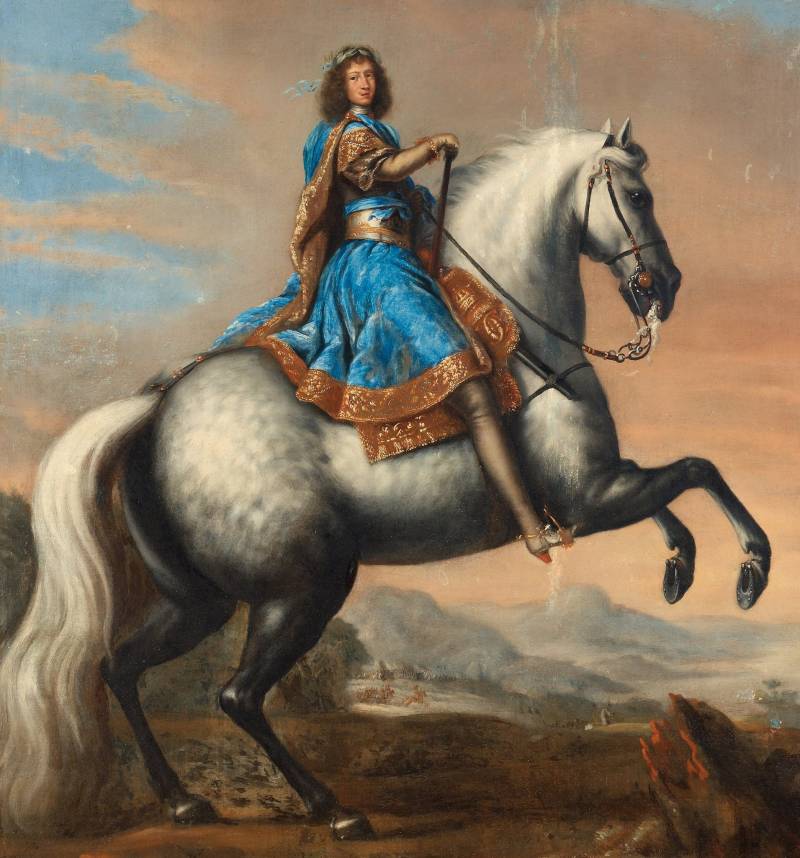
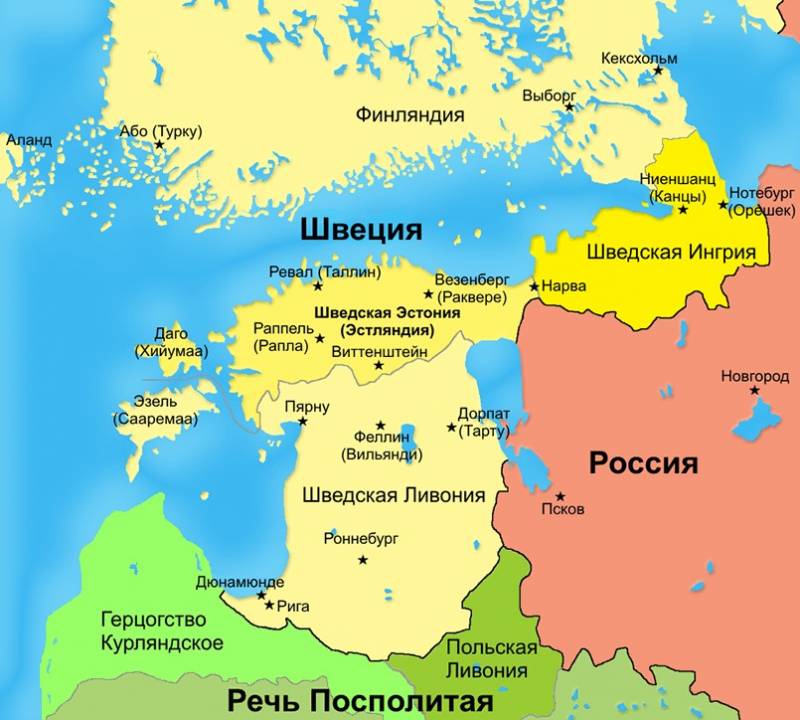
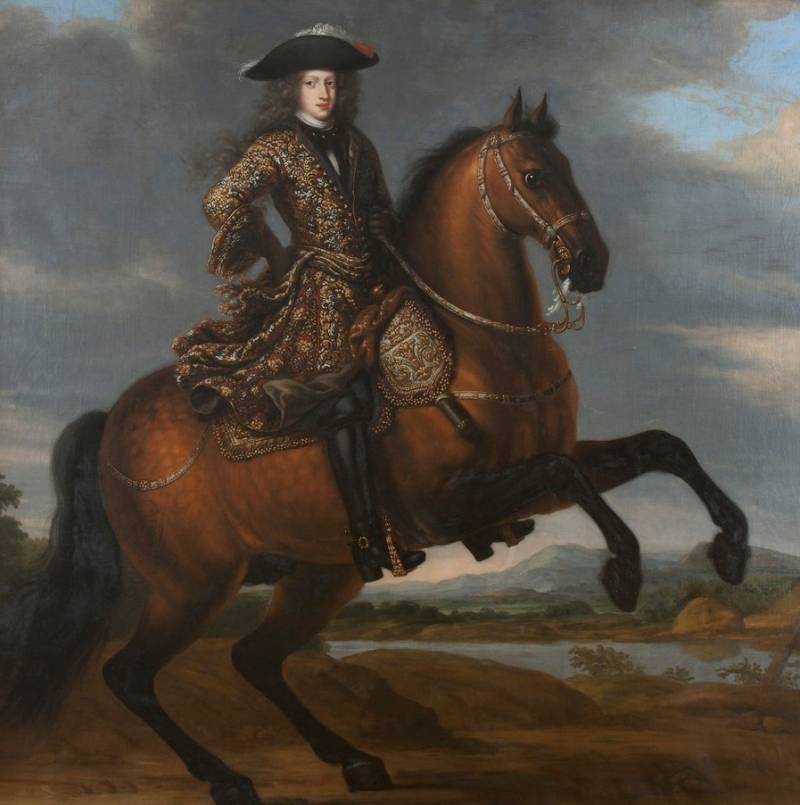
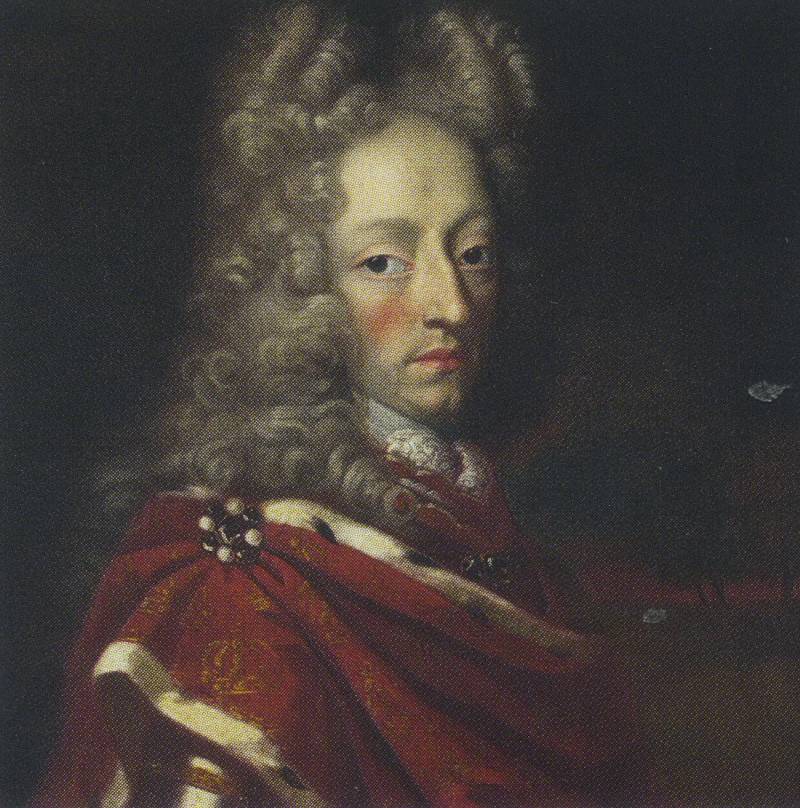
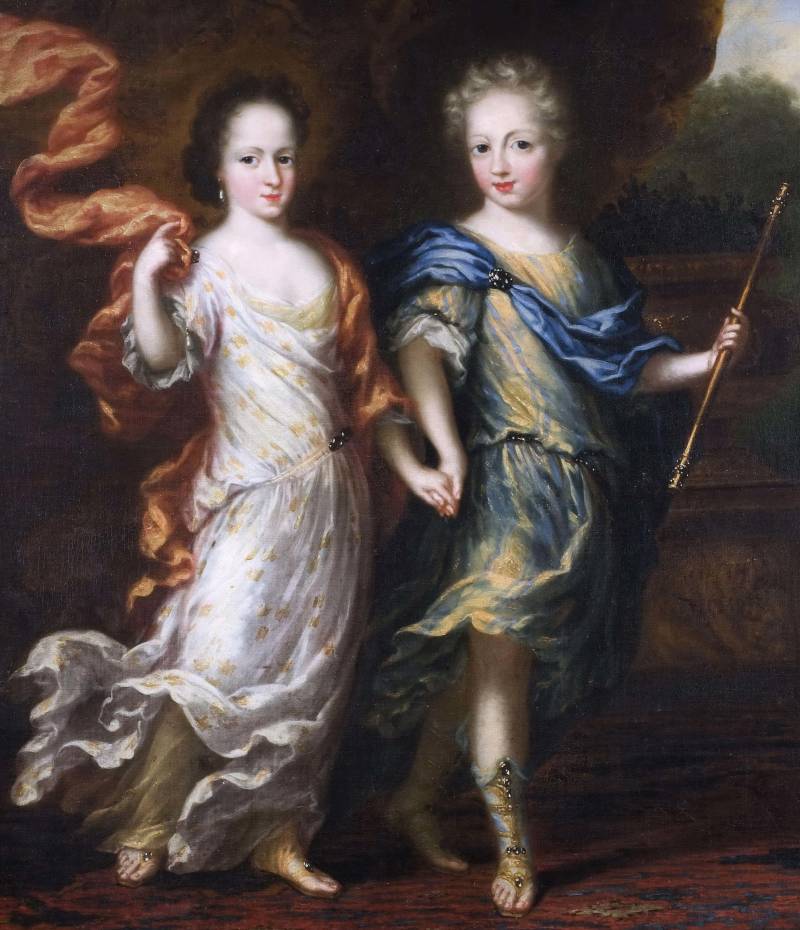
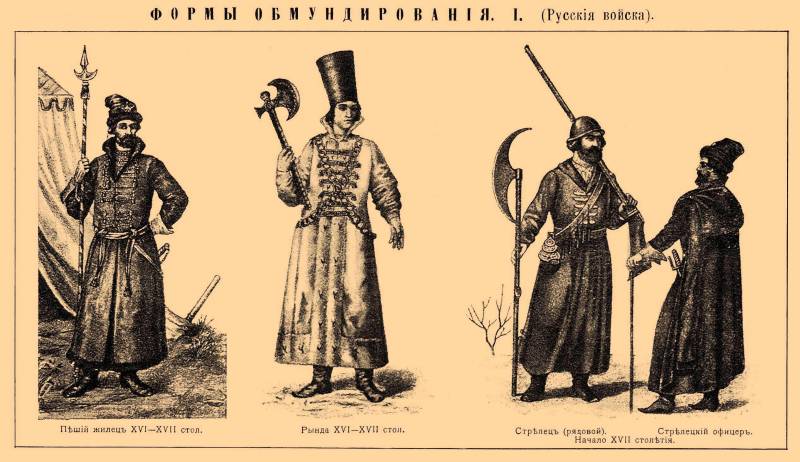
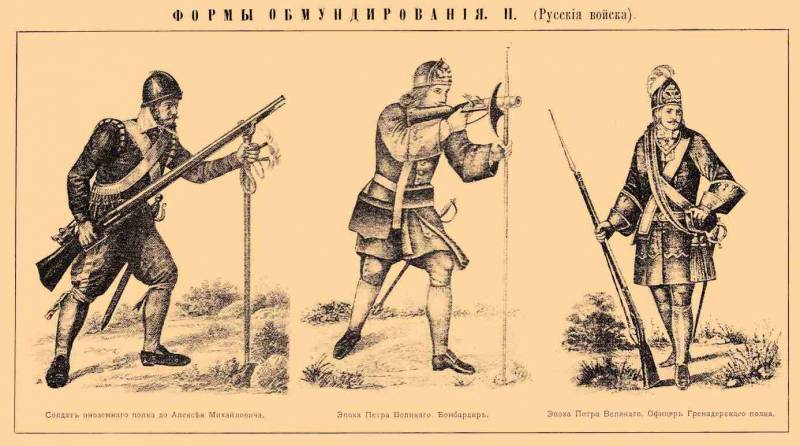
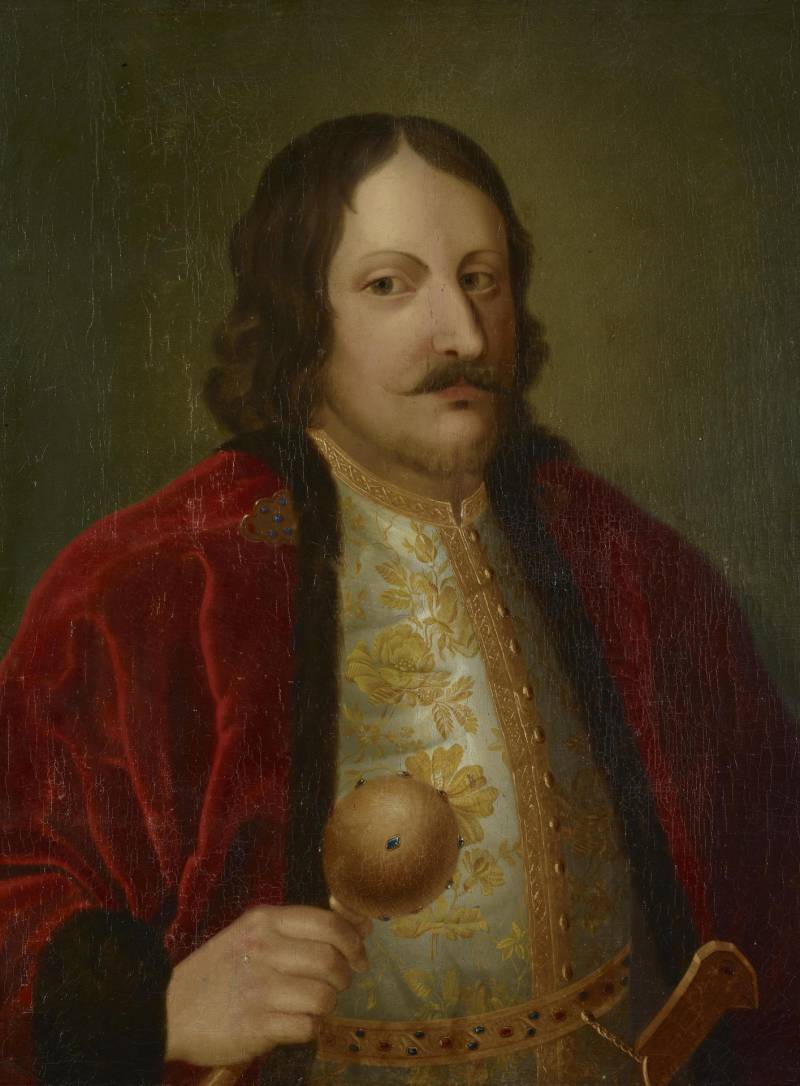
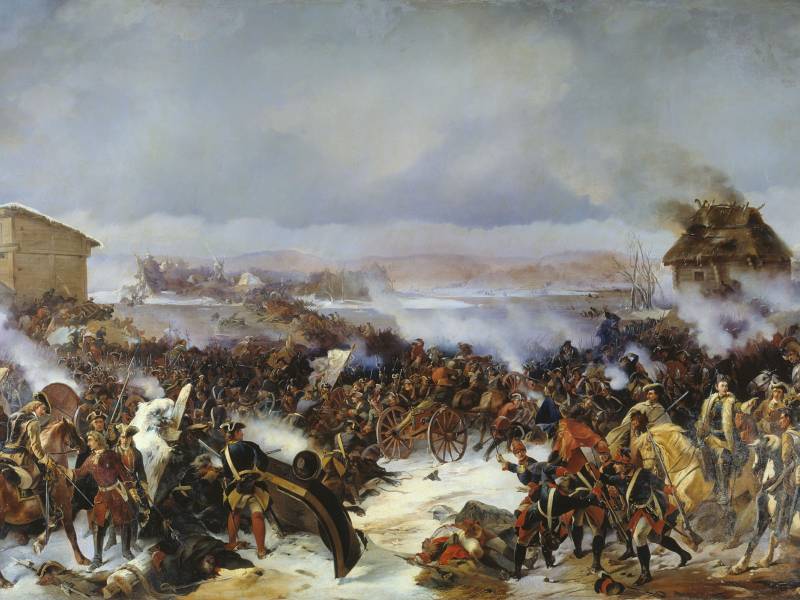
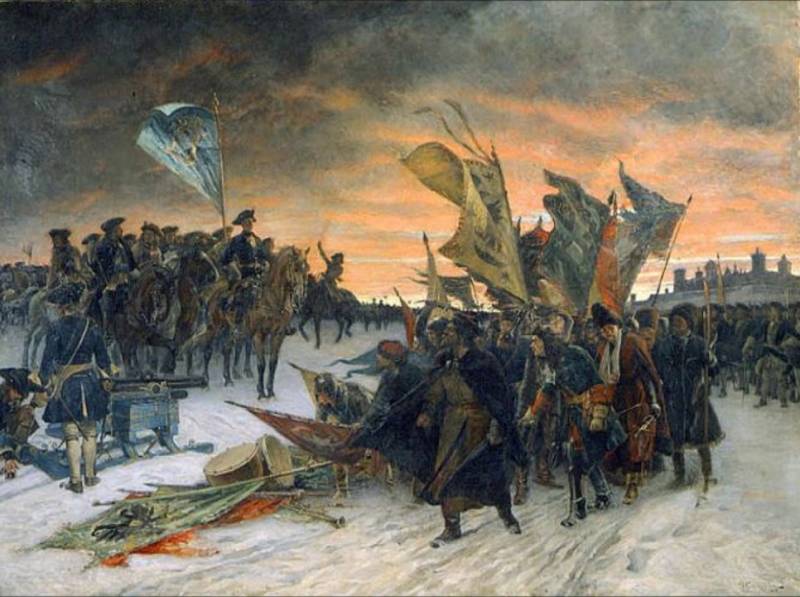
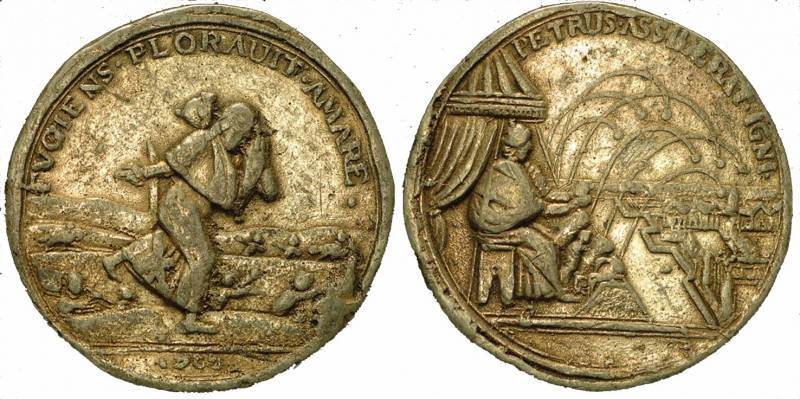
Information